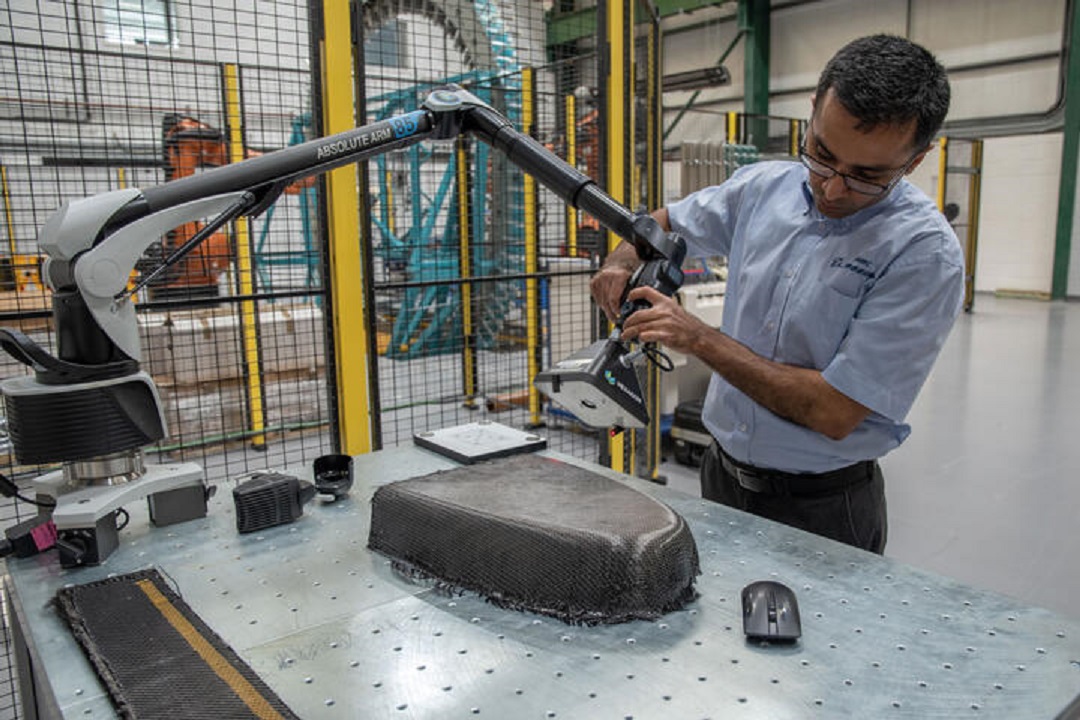
Scientists at the University of Sheffield Advanced Manufacturing Research Centre (AMRC) are researching a vision inspection system using 3D modelling that could replace the manual inspection process of composite parts.
‘Quality checks during the lay-up process are vital but can take 70% or more of total machine time,’ said Zeeshan Qureshi, lead research engineer at the AMRC Composite Centre. ‘It is a huge cost to our partners so we’re investigating automated in-process inspection systems that could help significantly decrease, or even eliminate entirely, manual inspection in order for them to achieve higher productivity in their factories.’
According to the AMRC, detecting defects such as gaps, overlaps, the presence of foreign objects and debris in fiber-reinforced plastics at the relatively early lay-up stage of production is more efficient and cost effective than identifying unacceptable weak points in the material once it is part of a completed component.
Qureshi used Hexagon’s Vision System 3D, a camera-based sensor that can detect the orientation of composite fiber using pixel-based algorithms, according to AMRC. The system uses a metrological Absolute Arm for position referencing which, combined with scans made using the arm’s laser scanner and camera functionalities, can map fibrer orientation data onto a three-dimensional model of the part being inspected using a 3D software platform.
‘We’re primarily using the system for weaving, braiding and preforming processes,’ said Qureshi. ‘Once we perform that initial manufacturing process, we can bring the part to the workstation and we would use the new inspection system to do a scan of the part to generate the 3D profile of the part we have. Using some of the advanced algorithms that are built into the software, we’re then able to determine fiber orientations that can give us an indication of some of the defects that are present in the part. We can take that information back into our design and analysis software to update our models with the data from the as-manufactured part in order to perform an analysis which we can then compare against the as-designed part. This provides valuable information for comparing the ‘real’ and ‘virtual’ environments in which we work.
‘This is the first time we’ve had a metrology inspection system in-house,’ he added. ‘Now we’re hoping to help further develop both the hardware and software systems to make them robust enough to pick up some of the more complex defects that we’re hoping to achieve solutions for in the near future.
‘One of the advantages of having this system is that the sensor can be integrated with other composite lay-up machines as well, such as the AFP machine, braiding, stitching, or 2.5D or 3D weaving machines that we have at the AMRC with the aim of achieving online inspection systems.’
This story uses material from the AMRC, with editorial changes made by Materials Today. The views expressed in this article do not necessarily represent those of Elsevier.






